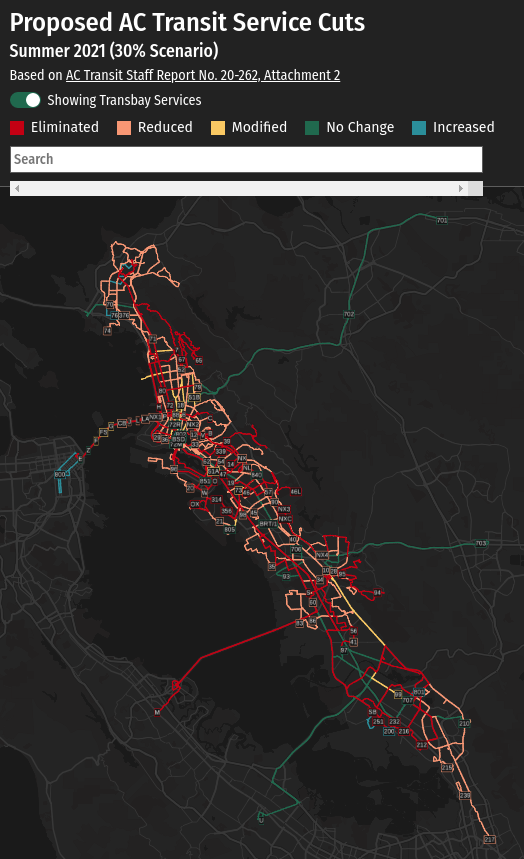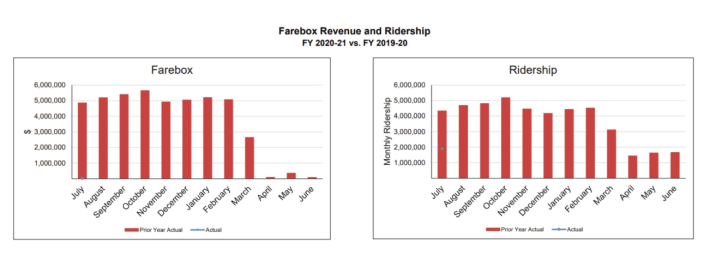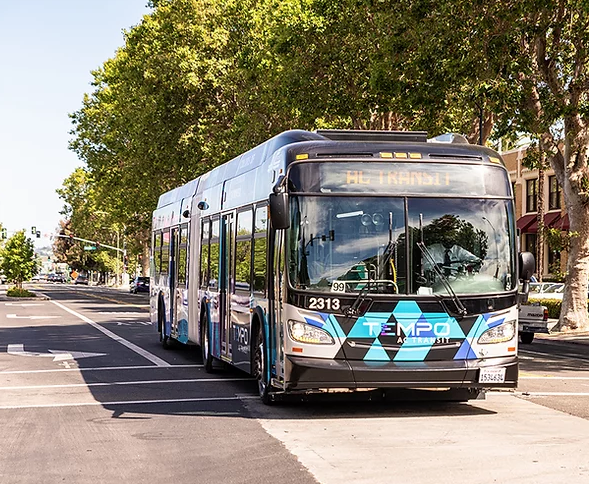AC Transit could be forced to make draconian service cutbacks next year, including slashing entire bus lines, according to a report from the agency's staff.
Without further government relief, the agency is facing a nearly $24 million potential budget hole next year, explained the East Bay Transit Riders Union's Derek Sagehorn. Following a pattern caused by the COVID crisis at transit agencies across the country, monthly ridership has plummeted to 1.96 million for August of 2020, down from 4.6 million for 2019.
To avoid cuts that come to about 30 percent of AC Transit's current map, Sagehorn wants to get advocates working now to push for new revenue sources. His advocacy group created an interactive map so people can see what could happen by the Summer of 2021 if current trends continue:

AC Transit spokesperson Robert Lyles, in an email to Streetsblog, said that despite the frightening report, there's currently no plan to cut lines. He added that the report was "developed by our staff Planners, to offer a worst-case scenario."
But if that scenario happens, the Transit Riders Union map, said Sagehorn, lets people see how the cuts would impact them as individuals. His view is that with a non-stop stream of bad news, it's too easy for advocacy-minded people to lose track of how badly things can get for transit. "We needed to visualize so people can connect it to their own transit stops... the 14, the 6, the 40, it's a bunch of numbers," he explained, until people hear their own line has been cut.
Sagehorn wants people to vote for possible funding sources, such as Prop. 15, which would allow adjustments to commercial property taxes and could provide $29 million for AC Transit and funds for other strapped transit agencies as well.

SFMTA, VTA, and other agencies, meanwhile, face similar shortfalls. Sagehorn wants transit riders from around the Bay Area to work hard now to avoid austerity cuts. "If we organize early we have a shot of pushing it up the ladder to MTC to see what we can do backstop this."
For now, Lyles insists that "Our transit district is financially stable, through the close of the fiscal year, as a result of funding awarded through the Coronavirus Aid, Relief and Economic Security (CARES) Act," adding that ridership is now increasing and they hope to resume fare collection "during the fall."
"It is important to stress, the board is not currently considering service reductions. Our Board of Directors is the policy body responsible for service changes. If there were any proposed changes to service, that information would be widely communicated to our riders in the form of public hearings, hosted throughout our East Bay communities," he said.
Again, check out the Transit Rider's map here.






